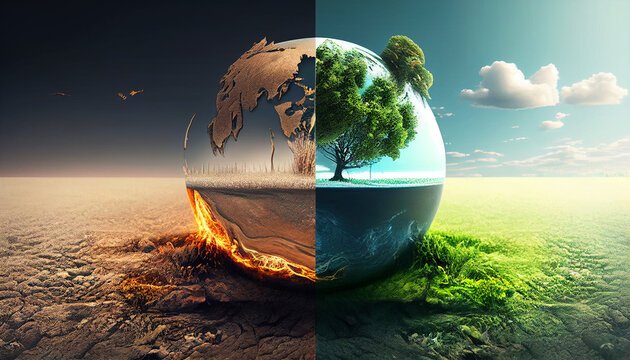Unveiling the Culprits: Understanding What Causes Global Warming

Introduction:
Introduce the topic of global warming as a critical environmental issue affecting the planet and human societies. Explain the significance of understanding the causes of global warming to address its impacts and work towards sustainable solutions.
Understanding Global Warming:
Define global warming as the gradual increase in Earth’s average temperature due to the buildup of greenhouse gases What Causes Global Warming? in the atmosphere. Explain the greenhouse effect, where these gases trap heat and lead to climate changes, including rising temperatures, melting ice caps, and extreme weather events.
Key Causes of Global Warming:
- Greenhouse Gas Emissions:
- Carbon Dioxide (CO2): Discuss how human activities such as burning fossil fuels (coal, oil, natural gas), deforestation, and industrial processes release CO2 into the atmosphere, contributing to global warming.
- Methane (CH4): Explain the sources of methane emissions, including livestock farming, rice cultivation, landfills, and natural gas production, and how methane is a potent greenhouse gas.
- Nitrous Oxide (N2O): Highlight the role of N2O emissions from agricultural practices, fossil fuel combustion, and industrial processes in amplifying the greenhouse effect.
- Deforestation and Land Use Changes:
- Loss of Carbon Sink: Explain how deforestation and land-use changes, such as clearing forests for agriculture or urban development, reduce the planet’s natural ability to absorb CO2, leading to increased atmospheric concentrations.
- Altered Carbon Cycle: Discuss how land-use changes disrupt the carbon cycle, affecting ecosystems, biodiversity, and contributing to global warming.
- Industrial and Agricultural Practices:
- Fossil Fuel Burning: Explore the impact of burning fossil fuels for energy production, transportation, and manufacturing on global warming, including the release of CO2, methane, and other pollutants.
- Agriculture and Livestock: Discuss the role of agriculture in global warming, including methane emissions from livestock digestion, nitrous oxide from fertilizers, and land-use changes for crop cultivation.
- Transportation and Urbanization:
- Vehicle Emissions: Highlight the contribution of transportation to global warming, including emissions from cars, trucks, ships, and airplanes, and the need for sustainable transportation solutions.
- Urban Heat Island Effect: Explain how urbanization and the concentration of buildings, roads, and infrastructure in cities can lead to the urban heat island effect, contributing to higher local temperatures and influencing regional climates.
- Industrial Processes and Waste Management:
- Industrial Emissions: Discuss emissions from industries such as manufacturing, cement production, and chemical processing, including CO2, methane, and other greenhouse gases released during these processes.
- Waste Generation: Explain the role of waste management practices, including landfill methane emissions and incineration, in contributing to global warming and air pollution.
Climate Feedback Loops and Amplification: Discuss climate feedback loops, such as the melting of ice caps leading to reduced albedo (reflectivity) and increased heat absorption, and permafrost thawing releasing stored methane, which can amplify global warming effects.
Impact on Climate and Environment: Explain the consequences of global warming on climate patterns, sea levels, extreme weather events, biodiversity loss, ocean acidification, and human health, highlighting the urgency of addressing these impacts.
Mitigation and Solutions: Discuss mitigation strategies and solutions to combat global warming, including:
- Transitioning to renewable energy sources like solar, wind, and hydropower.
- Improving energy efficiency in buildings, transportation, and industries.
- Protecting and restoring forests, promoting sustainable land-use practices, and reducing deforestation.
- Advancing climate policies, international cooperation, and public awareness campaigns.
Conclusion:
Summarize the complex factors contributing to global warming, from greenhouse gas emissions to land-use changes and industrial practices. Emphasize the need for urgent action, collaboration across sectors, and sustainable solutions to mitigate global warming’s impacts and safeguard the planet for future generations.





